It started very well with German engineering and American design. The Crossfire was a perfect vehicle to restore Chrysler’s brand image. But could that be enough?
Ah, the DaimlerChrysler merger! This “equal to equal” rapprochement between two groups which quickly turned out to be a pure and simple acquisition. It was the time when Jürgen Schrempp, the boss of Daimler-Benz, was trying to create a new global giant (with Mitsubishi) before it blew up in his face. Fortunately, some interesting vehicles were born from this “alliance” which lasted less than 10 years.
Back to the past
We are in 2000 and Eric Stoddard, who joined Chrysler in 1998, is creating the designs for a neo-retro inspired coupé. Tom Gale, the famous design director, likes the art deco style of the sketches. It must be said that Chrysler has already offered several concepts influenced by the 1930s: Atlantic (inspired by Bugatti, in 1995), Phaeton (1997) or Chronos (1998).
Photo: Chrysler
He authorized the construction of the concept, which was to be exhibited at the Detroit Auto Show in January 2001. But Gale retired in December 2000 and it was his replacement, Trevor Creed, who carried out the unveiling. The latter said at the event: “If we were to put it into production, I’m sure it would become an instant classic.” History will speak…
The lines are chiselled and a dorsal ridge runs throughout the car, with the central wiper placed in the high position ensuring continuity. Tightening the rear window results in muscular fenders. The concept is based on a wheelbase of 2.61 meters. It features a 2.7-liter supercharged V6 developing 275 horsepower mated to a 5-speed manual transmission. The difference between the front tires (in 19 inches) and rear (in 21 inches) accentuates the posture of the machine. The interior is signed by Glen Abbott. The Crossfire was a success and Chrysler quickly decided to put it into production. Recall that the company already has a solid track record of taking concepts from the light of living rooms to the asphalt of the streets (think Dodge Viper and Plymouth Prowler).
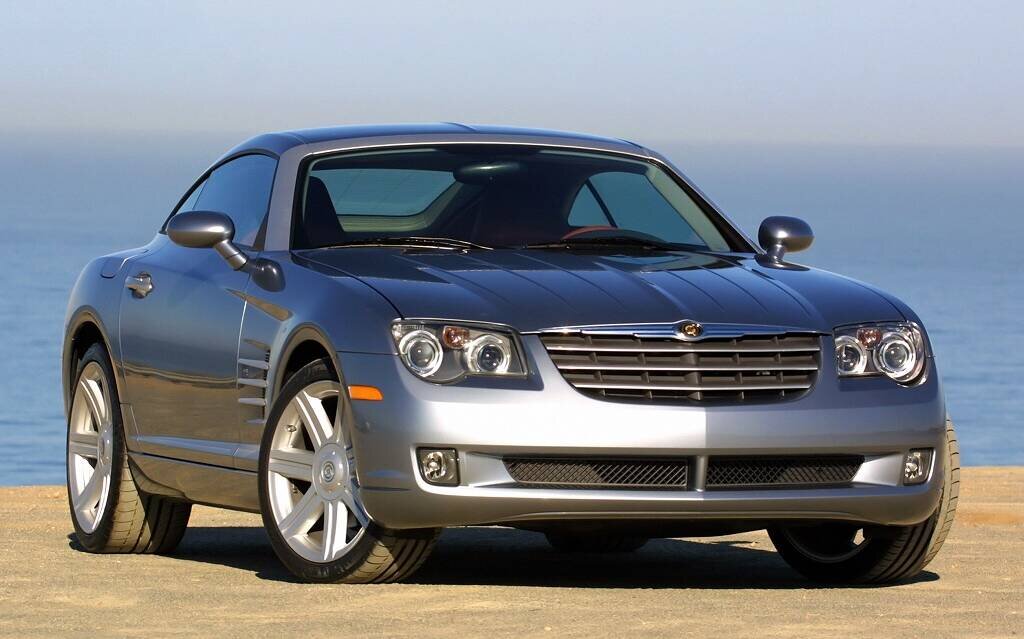
Photo: Chrysler
German recycling
For a model with such a small projected volume, there is no question of using an original chassis. The solution quickly emerged: use the R170 propulsion platform of the Mercedes-Benz SLK. First shown in concept form in 1994, the SLK went on sale in 1997 and stood out from its competitors with its retractable hardtop. Only available with a 4-cylinder, it only received a V6 from the 2000 vintage. It ended its career in 2004 after 311,222 units sold (a real success) to be replaced by the SLK R171 in 2005.
Designer Andrew Dyson, assisted by Stoddard, will ensure the transition from concept to mass production. It must manage different requirements: make the front compatible with safety standards and modify the proportions by migrating to a chassis with 21 centimeters less wheelbase while retaining the original design as much as possible. And we can say that he succeeded.
The lines are surprisingly close to the vehicle presented in Detroit and the car keeps its retractable spoiler (which rises above 95 km/h and lowers below 70 km/h), but is equipped with smaller tires (18 inches front and 19 inches rear). The interior comes directly from the SLK but offers more colors.
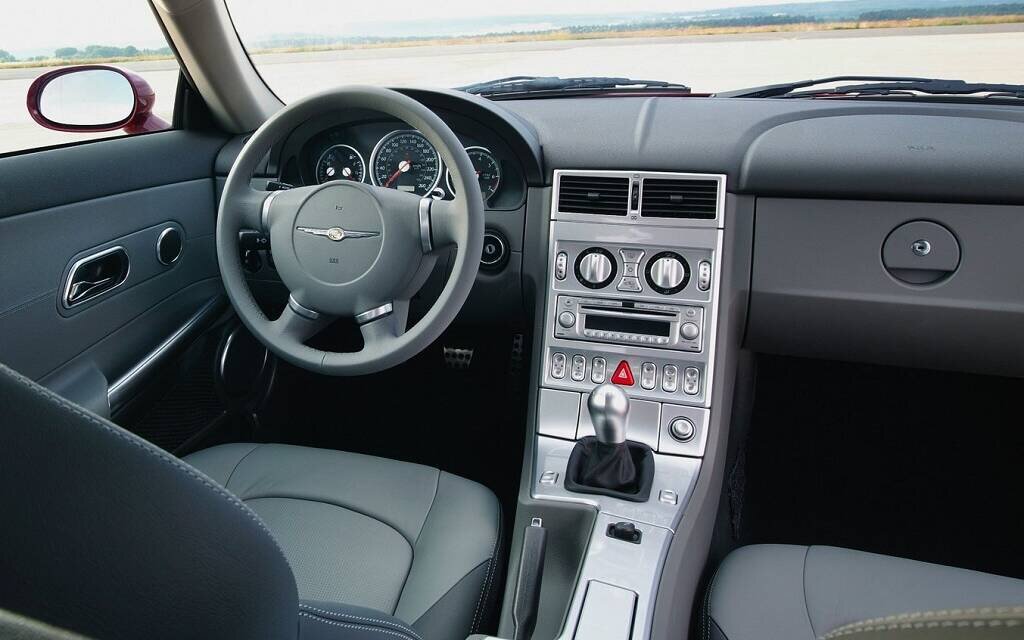
Photo: Chrysler
For the mechanics, same story: 3.2-liter V6 of 215 horsepower and choice of gearboxes: a 6-speed manual or a 5-speed automatic, stamped with the three-pointed star. This significantly reduces development costs and times. Chrysler turned on the turbo and presented its production Crossfire, as a 2004 model, at the Los Angeles Auto Show in October 2002, barely 21 months after Detroit.
A complete range
On February 3, 2003, the first production Crossfire left the production lines of coachbuilder Karmann in Osnabrück, Germany. It is led by Wolfgang Bernhard, president and chief operating officer of Chrysler. The brand then hopes to sell 20,000 per year, including 17,000 destined for North America (including only about 700 for Canada). The cars arrived in Canadian dealerships in the summer of 2003. At launch, a single finish was available.
Billed at CAD 47,745, it competes with models as varied as the Audi TT ($49,975), BMW 330i Coupe ($49,550), Ford Thunderbird ($56,775), Infiniti G35 Coupe ( $45,200), Mazda RX-8 ($36,795), Mercedes CLK320 ($62,850) and Nissan 350 Z ($45,400). Compared to its cousin SLK320, sold at $61,950, it’s almost a bargain!
The Crossfire is appreciated by the press for its original look, its “German” finish, its balanced handling (despite a rear that is sometimes considered a little too lively). However, she criticizes it for its rear visibility, its slightly reduced trunk and not easy to access, a slight lack of power (the 0 to 100 km/h is shot down in 6.3 seconds) and a roominess a bit fair with seats a little too firm.
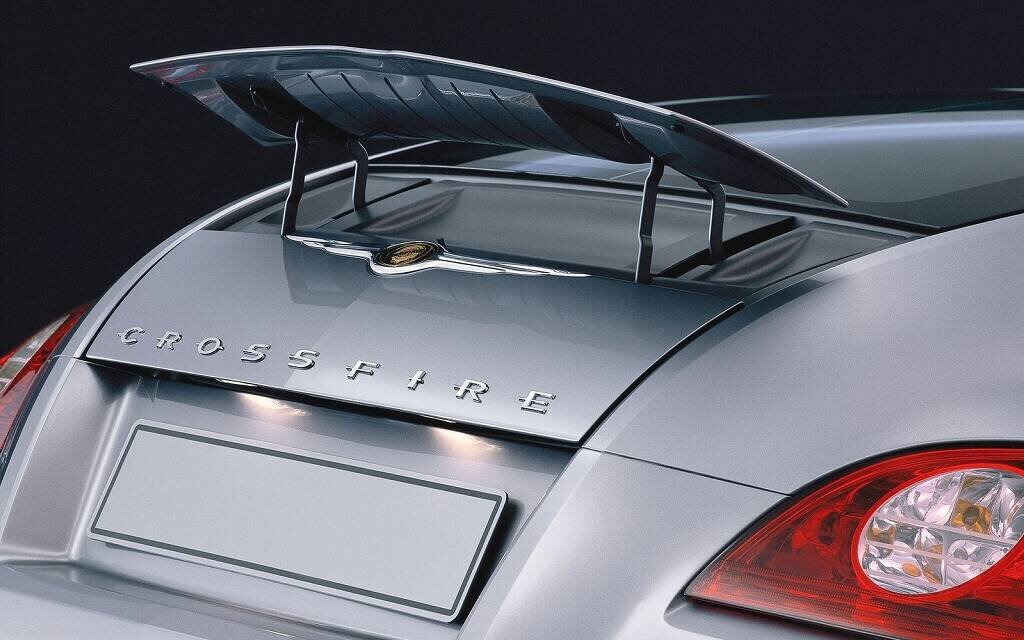
Photo: Chrysler
For 2005, Chrysler is completely revamping the lineup. At the entrance, there is a new base version of the coupe, less equipped and priced at $39,995, followed by a Limited version, still sold for $47,745. Next comes the new convertible, only in Limited at $51,595, which goes into battle against the BMW Z4 ($51,800), the Mercedes SLK 350 ($64,500, paradoxically presented at the same time) and the Porsche Boxster (62,400 $). Unlike the SLK, it has a soft top that can fold down in 22 seconds (though not fully automatic).
It doesn’t really suffer from the loss of the roof in terms of stiffness (after all, the stock platform is designed to be a convertible). For performance enthusiasts, Chrysler will introduce an SRT-6 variant in the fall of 2004 with the supercharged 3.2-liter V6 manufactured at AMG.
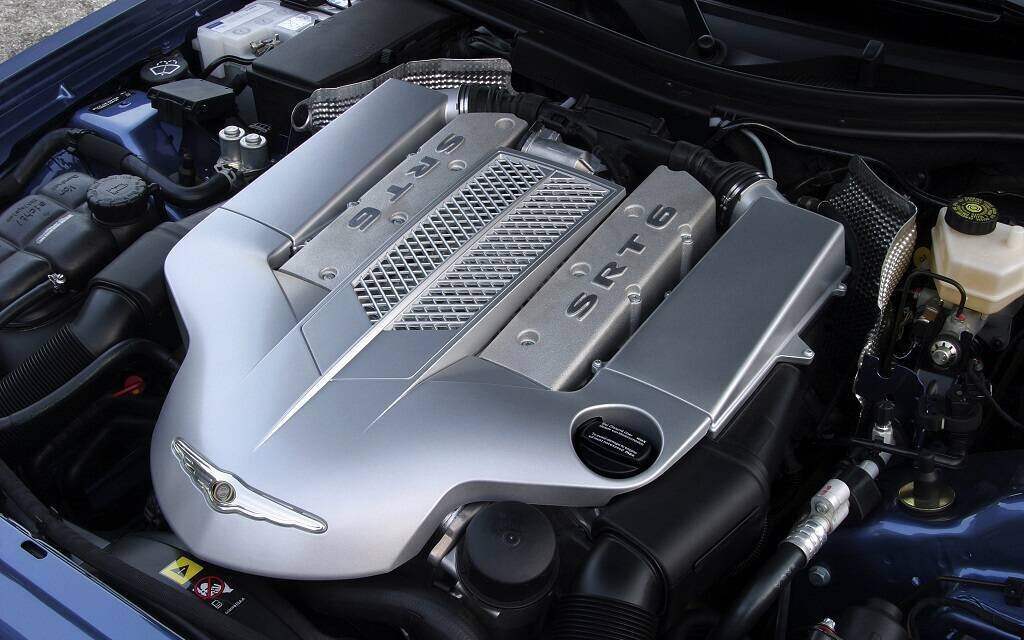
Photo: Chrysler
It then develops 330 horsepower and 310 lb-ft of torque (which is odd because, installed in the SLK, the same engine generates 349 horsepower and 332 lb-ft of torque) and can only be mated to an automatic transmission with 5 reports. The SRT-6 accelerates from 0 to 100 km/h in 5.4 seconds, is distinguished by its 16-spoke rims, its fixed rear spoiler and its SRT logos. It is available as a coupe ($62,475) and convertible ($66,325). Marketed only two years, the SRT-6 is very rare (see production figures below).
The fall
For the first two years, the Crossfire perfectly fulfilled its commercial objectives. However, from there, things will go wrong. She will not know any more significant evolutions until the end of her career. Sales will drop dramatically from 2006, never to recover.
|
2004 |
2005 |
2006 |
2007 |
2008 |
Total |
|
|
Crossfire Coupe |
25,123 |
11,817 |
3,516 |
1,625 |
826 |
42,907 |
|
Crossfire Roadster |
0 |
20307 |
5061 |
2708 |
960 |
29,036 |
|
Crossfire SRT-6 |
0 |
2445 |
126 |
0 |
0 |
2,571 |
|
Crossfire SRT-6 Roadster |
0 |
1330 |
170 |
0 |
0 |
1,500 |
|
Total |
25,123 |
35,899 |
8,873 |
4,333 |
1,786 |
76,014 |
The last Crossfire leaves the chains of Osnabrück on September 17, 2007. At this time, Chrysler has many fires to put out. The division is losing money and the agreement with the German owners has turned into a storm. Daimler-Benz separates from its American branch and sells it to the Cerberus Capital Management investment fund in August 2007. The 2008 crisis will end up bringing Chrysler down…
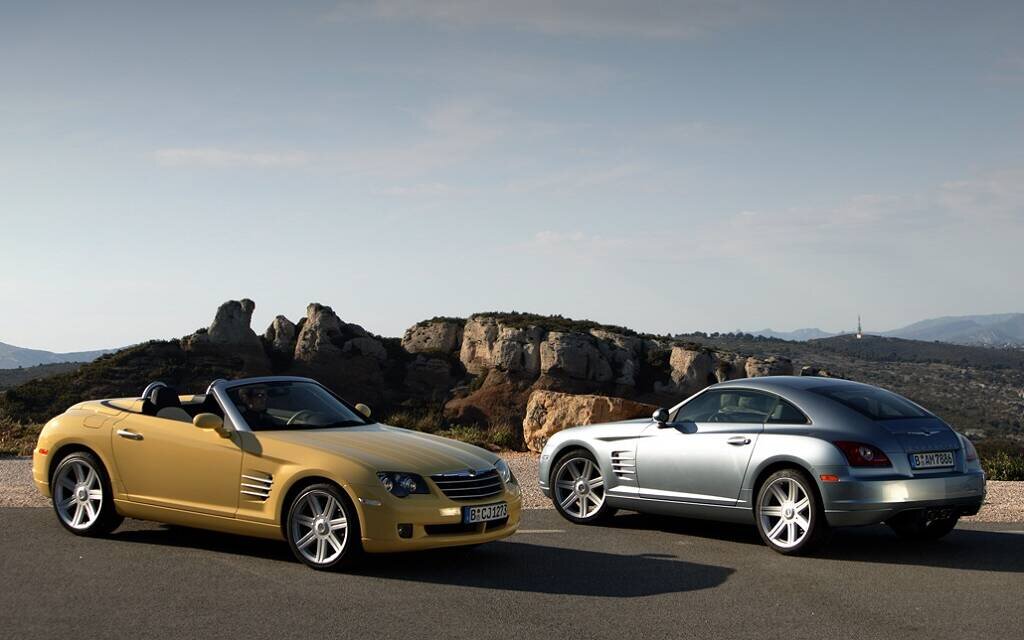
Photo: Chrysler
Endowed with undeniable qualities, the Crossfire has not yet really found its audience. Positioned against models with prestigious logos and recognized sports cars, it did not succeed in its image vehicle mission.
Probably because Chrysler’s brand image was a little too decrepit and there was still a lot to do…
